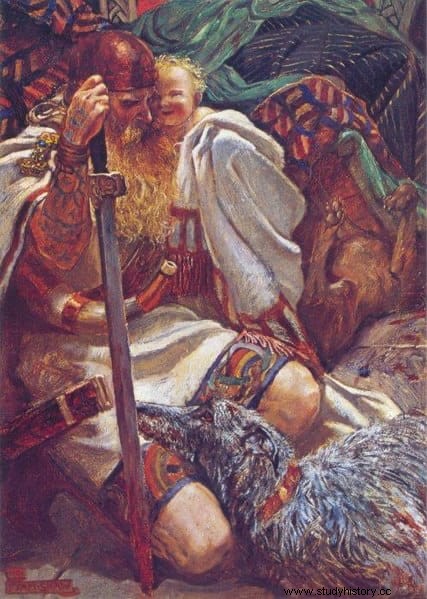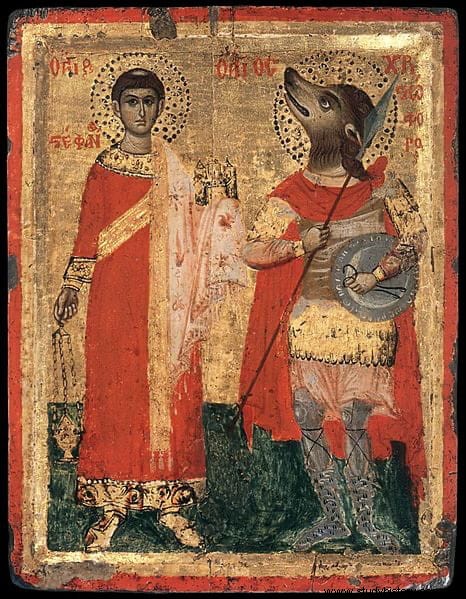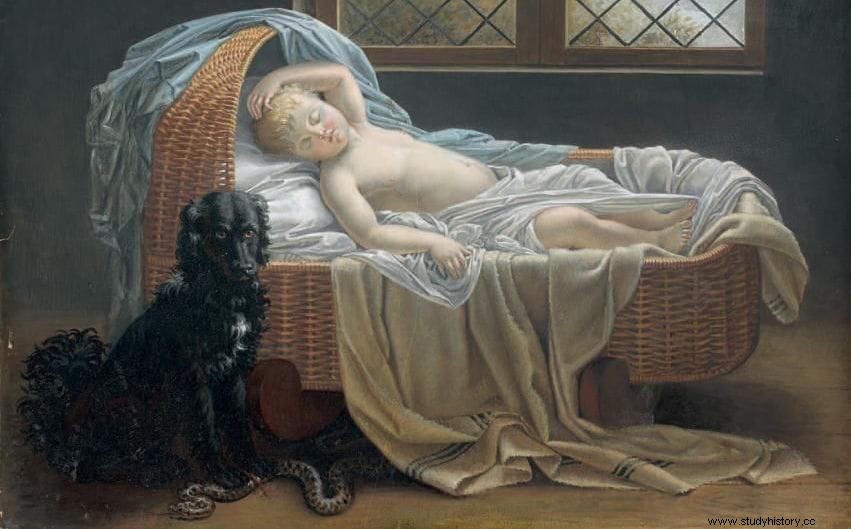Martyrology Romanum ex Ecumenical Sacred Decree of the Second Vatican Council Instauratum Auctoritate Ioannis Pauli PP. II promulgatum is the long title of a catalog of martyrs, beatifics and saints of the Catholic Church first published in 2001 by the Congregation for Divine Worship and the Discipline of the Sacraments mercy to the decree Victoriam Paschalem Christi of John Paul II. The second and last edition held to date was in 2005 and in it around seven thousand names are reviewed. Among them does not figure one who is undoubtedly the most unsung saint in history:St. Guinefort, whose devotion began in the Middle Ages.
The reason for that omission in the martyrology lies in the fact that, although Saint Guinefort is awarded some miracles and his tomb became a place of pilgrimage for centuries, at least in France from the Middle Ages until well into the 20th century, in fact he never counted on the benefactor of the Church for one decisive reason:he was a dog. To be exact, a lebrel or greyhound belonging to the lord of Thoire y Villars, corresponding to the present locality of Villars-les-Dombes, in the Auvergne-Rhône-Alpes region.

The history was collected and narrated in the year 1250 by Étienne de Bourbon (often Spanishised as Stephen of Bourbon), a Dominican inquisitor who enjoyed certain prestige in his day for being the author of a Manual of the Inquisitor and especially of the Tractatus de diversis materiis predicabilibus , a compilation of three thousand moralizing fables to which by then was usually resorted to as a didactic method of religious doctrine; many important authors resorted to the exemplum (or to the examples , in the plural) for their literary works, case of Petrarch, Bocaccio, Geoffrey Chaucer or our Don Juan Manuel.
But back to the facts. According to the friar, Guinefort was a dog who lived in the castle of the said nobleman, not far from Lyons. One day the knight went out hunting and when he returned he found a terrifying panorama in the estate of his son, a baby of only a few months:the cradle was overturned and the sheets strewn about the floor with stains of blood. His wife and a maid rushed in but he could not see the little one and, instead, when Guinefort approached his master to greet him he saw that he too had the bloody snout.

Mr de Villars deduced, horrified, that the dog had killed and devoured his shaft. Prey to an attack of anger and despair, he drew his sword and discharged a mandoble on the animal, decapitating it in the act and throwing its body into a well... and then a cry was heard. The baby was found under the overturned crib, hidden among the messy blankets and in addition safe and sound, presenting no injuries. The same could not be said of a viper next to him, dead, torn open obviously by the fauces of the dog. The blood in these was from the ophidium.
Guinefort was not only not guilty but, loyal to his own, he had protected the boy from the snake. Appalled by the mistake, the gentleman and his wife decided to bury the animal in the most dignified manner possible, filling the pit, covering it with stones and planting several trees around, so that it constituted an authentic shrine. Because, learning of the incident, the villagers started going to the tomb to honor him, as they considered him a protector of childhood. Thus was born an unusual popular veneration.
The thing wasin crescendo and the people took their children to the grave that the spirit of Guinefort might heal or guard them from any evil, such as was done to the normal saints of the Church. To this he did not like that situation and even less that the dog was referred to as a saint, after some miracles were attributed to him, so he always tried to put an end to that superstition, sometimes expressly forbidding what had already attained dimension of local cult.
In fact, the quoted Étienne de Bourbon heard mention of this custom in several confessions when he preached in Lyons and decided to check it out personally. His testimony, told in the work De superticione , was not very positive because the devotion of the people was often mixed with rites that practically inked paganism:"They were seduced and often deceived by the Devil, who hoped in this way to lead men into error" .

The inquisitor especially singled out women who took their sick or poor children to an elderly woman settled there, who performed demonic advocations and made offerings with salt, hanging then the little ones’ clothes on brambles (there were ethnologists who testified to seeing full branches of garments knotted at a date as late as 1879), before placing naked babies in hollows of tree trunks, conjuring afterwards beings of nature to carry away evil and bring health. The mothers then had to light a candles situated on each side of their little ones and leave them like this all night, dipping them the next day nine times in the river until they remained immunised. Apparently, sometimes the flames accidentally caused fires and with them the death of the babies; nor did they lack occasions when wolves devoured them during the night.
Some researchers suggest it was perhaps a deliberate infanticide - killing newborns who could not be kept was a terrible reality in Europe for centuries - that was endowed with a ritual wrap so that its parents could exonerate themselves psychologically. Nevertheless, Étienne de Bourbon did not consider it appropriate to prosecute those people, whom he considered victims of his own ignorance, trying to convince families not to leave their children exposed and helpless in that way instead of being permissive with them devotion to Guinefort and with sympathetic magic.
The fact is that this is not the only case of canine prominence in religious legends. This in concrete has been linked with that of the dog of St. Roch, the saint who devoted to caring for plague patients turned out to be infected and was banished to a forest, where he would have perished of hunger than because his can brought him food; tradition ascribes to the animal the name of Guinefort, although the story of St. Roch was a century later, in the 14th, which indicates that the name would be based on the former.
Likewise, the French legend is quite similar to another one in northwest Wales about a dog named Gelert, the protagonist of a folk tale entitled Faithful hound (The faithful sabueso), in which Llywelyn the Great , Prince of Gwynedd, kills his dog Gelert (a gift from the English king) after a confusion like that of the Guinefort case, only substituting the serpent for a wolf and embellishing the story with typical British ghostly elements, as in the environs from the grave (which, by the way, would give rise to the formation of the village of Beddgelert) was heard the piteous howl of the dying animal.

The morale is easily deducible (enhancement of temperance against the capital sin of anger) and no one will escape the metaphorical character of some elements:in time, of the choleric knight's castle only Guinefort's makeshift tomb remained; the greyhound was held by a noble dog type in every sense, the serpent was a symbol of the devil for Christianity from its very origin and the wolf formed part of the popular malignant bestiary in times when it abounded much more. In fact, both Guinefort's and Gelert's are arguments from almost universally spread folk legends with slight variants; for example, in India it is a mongoose that rescues the baby from a cobra, while in Malaysia the protagonist animals are a bear and a tiger respectively.
In any case, the tradition of the devotion to St. Guinefort continued in spite of the measures adopted to put an end to it (exhumation and burning of its remains along with destruction of the place and threat of fine to anyone again gathering there), until on the thirties of the last century ended up diluting itself. Later it was discovered that Guinefort would have been a human saint who lived sometime between the 8th and 12th centuries of whom barely anything is remembered except certain concomitants in his death with that of St. Sebastian (ie asaeteado) and who was considered protective of childhood before illness, celebrating her feast on August 22nd. This date coincides with the estival period in which the star Sirius, represented by a can, rises at the same time as dawn; there are other saints who are associated with that astro and who are usually artistically represented with a dog's head, case of St. Christopher.
